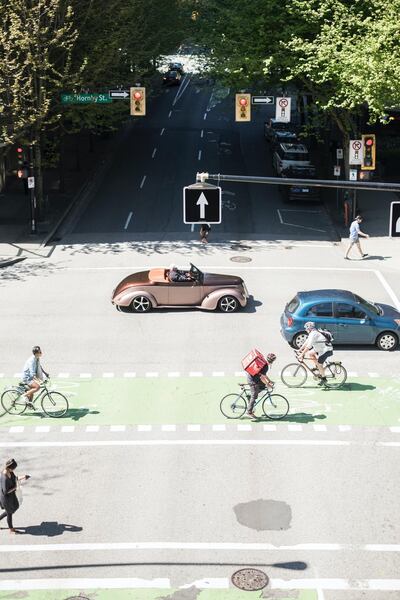Bicycle might not be the first mode of transport that springs to mind when trying to navigate your way around Dubai, but that is all about to change.
As part of the objectives of Dubai Vision 2021, the emirate is set to introduce new road safety laws and infrastructure to become cycle-friendly.
Sheikh Hamdan bin Mohammed announced the news on Thursday, urging authorities to adopt global best practices to develop a bicycle-friendly infrastructure in the emirate.
The move also supports the objectives of the Dubai Traffic Strategy 2021, which seeks to reduce road fatalities, and the UAE Energy Strategy 2050’s, which aims to achieve a 16 per cent reduction in carbon emissions by next year.
As Dubai prepares to take to two wheels, we take a look at some of the most cycle-friendly cities around the world:
Copenhagen, Denmark
Copenhagen is officially the most cycle-friendly city in the world, with more bicycles crossing the city than cars each year. Almost one third of all journeys in the Danish capital are taken by bike, while 62 per cent of all workers commute on two wheels. The city has ploughed heavy investment into its cycling infrastructure, building a number of special bridges and segregated cycle lanes, making much of the city’s cycle network traffic free.
Amsterdam, Netherlands
Anyone who has been to Amsterdam will know it is famous for its bikes. With its narrow canal ways and influx of tourists, bicycle is often seen as the quickest and easiest way to navigate the city. And it’s about to get even easier, as city officials have unveiled an ambitious new bicycle plan for 2022 that focuses on improving bicycle parking and existing infrastructure. New royal routes are being created to accommodate more bicycles, which will allow for a lower stress cycling experience during rush hour periods.
Antwerp, Belgium
Almost a third of all commuters in Antwerp travel by bicycle, aiding the city’s growing reputation as one of the world’s most cycle-friendly places. The city’s recent Bicycle Plan has worked to improve and connect the cycling network through intersection improvements, traffic light management, and the goal of lowering speed limits to 30 km per hour on 95 per cent of all streets.
Tokyo, Japan
Tokyo is a city with a strong cycle culture, with bikes making up 15 per cent of the official transport share in the Japanese capital. However, the cycle culture in Tokyo comes more from its people than from policies to encourage the use of bicycles, but the country has planned to create a number of new cycle tracks in preparation for the Olympic Games, which will keep users separate from traffic or pedestrians.
Vancouver, Canada
Vancouver is one of the most cycle-friendly cities in North America, and has been slowly adding to its downtown bicycle network year on year. As well as a rising number of commuters opting to travel by bike, a number of local businesses are choosing cargo bikes for deliveries. There are also more and more unidirectional cycling lanes popping up around the city, making it an increasingly safe and enjoyable place to navigate by bike.






